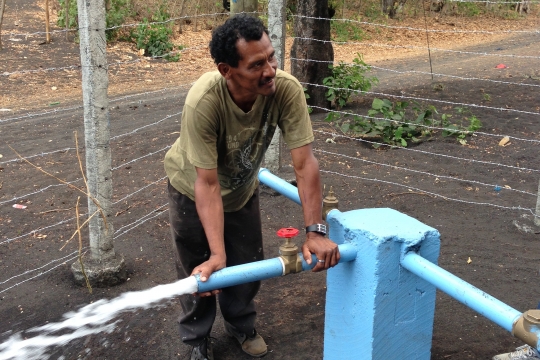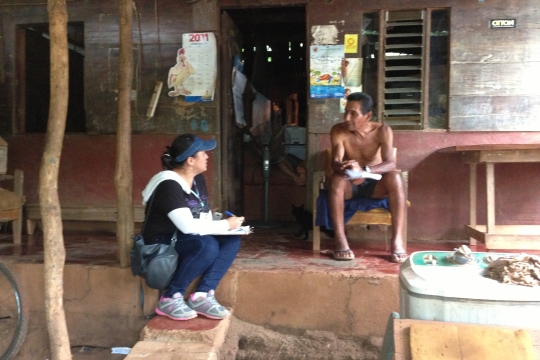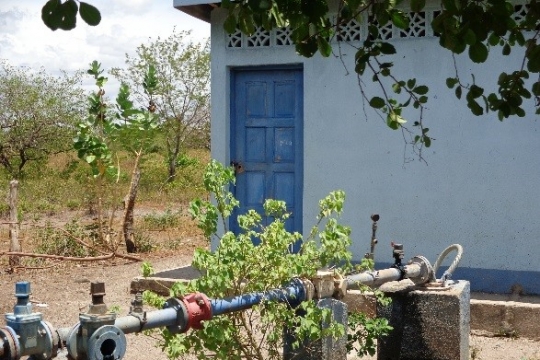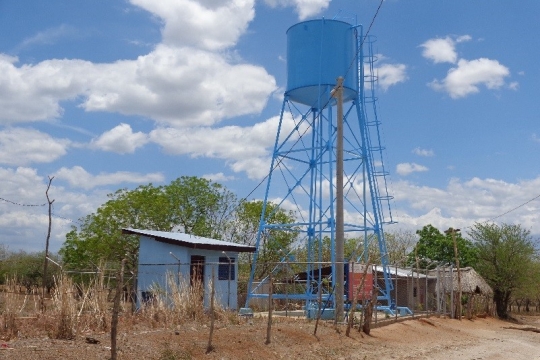In Central America there are approximately 24,000 organizations responsible for providing water for domestic consumption (CBDWO). These organizations are key agents in the generation of human well-being and poverty alleviation in the region.
The vast majority of community-based drinking water organizations (CBDWO) are small and highly dependent on the availability of surface water and groundwater. In addition to a number of inherent weaknesses and threats in the socio-economic environment, the trends of change towards higher temperatures and drought events longer are significant additional threat to the satisfaction of the consumption needs of million people served by the CBDWO in the region.
Our project contributed to provide these organizations the tools they needed for the effective implementation of adaptation actions, so they can reduce their vulnerabilities due to climate change. Those local capacities built during the project can also scale up and feed the national adaptation strategies.
Project overview
AC3 was a three year project in Central America, founded by IDRC, that focused its work on CBDWO located in three areas of the region, these organizations that are usually highly affected by water insufficiency in rural communities. The project worked in Guatemala, Nicaragua and Costa Rica with the aim of improving the decision-making processes related to the design of plans and policies for climate change adaptation of CBDWO in Central America.
We wanted to obtain primary data from a representative sample of CBDWO in those three countries, in areas where major negative changes in the availability of water are expected due to climate change, in addition to other non-climatic disturbances that increase their vulnerabilities. That’s why we went to those places, studied the management, vulnerabilities and needs of the CBDWO and the behaviors and conditions of the people at home, so we were able to identify opportunities and build an adaptation strategy based on them.
Research techniques included:
modeling of climate scenarios at local, regional and national level, qualitative analysis (e.g. participatory and multidisciplinary methods, case studies) and quantitative analysis (e.g. descriptive statistics, econometric methods) of information on adaptation strategies of CBDWO and economic experiments to determine the positive or negative synergies that can occur at multiple levels of decision on adaptation investment.
The project’s specific objectives were:
- To analyze, identify and map the impact of climate change on the users of the water resource for the definition of priority areas of action at the regional level.
- Identify and evaluate from a multidisciplinary perspective, the factors that facilitate the successful adaptation of CBDWO faced intense phenomena of drought.
- Analyze the incentives and constraints, beyond the financial aspects, affecting the decisions of communities and households to invest in adaptation to the CC, including aversion to risk, vision of short-term and prosocial preferences.
- Develop guidelines for the design of multi-tiered local adaptation strategies and multi-stakeholder (local, national, NGOs),
- Contribute to the building of local capacities for adaptation
- Disseminate the results at multiple levels, from the local to scientific forums.
Our work and main results
- Through the research process we were able to identify the effects climate change would have on Central America, the major vulnerabilities of the most affected CBDWO and primary adaptation solutions. The results were also used to build the open platform mesomapps.info which contains climate information and provides data, tools, climate scenarios and impacts in the region’s hydrology.
- We proposed an adaptation strategy to respond to the most aggressive scenarios and to contribute to the local development. The strategy aimed to:
- Promote an efficient management of water demand.
- Establish monitoring and early warning systems, as well as accessible weather prediction systems.
- Establish financial mechanisms for operational costs recovery due to the need of infrastructure investments inside the CBDWO, taking into consideration equity and poverty.
- Potentiate the technical cooperation for the CBDWO, including financial support when needed.
- Improve the organizational capacities and the reporting of the CBDWO.
- As part of the experiments we found that some client behaviors affected the adaptation actions, making it really difficult to invest in expensive home technologies to face droughts or to see the results in a long term. It was better to invest in short term technologies based on water conservation. Thanks to this data, the project tried some tools that were able to reduce in a 11% the water consumption at home, which is a higher percentage of what’s found in other studies in Latin America. The results showed that the investment pays two years after installing the water saving technologies, despite the behaviors of the clients at home.
- The project also allowed to use innovative methodologies (like the economic experiments and innovative water saving technologies) to give relevant and solid results, recommendations and conclusions.
- The data collected from 257 communities (7700 homes) in Guatemala, Nicaragua and Costa Rica allowed the project to identify their vulnerabilities and needs for facing climate change effects related to water supply and consumption.
- AC3 worked with CBDWO to make visible the importance of these organizations for rural water supply and the communities’ development as we generated a big amount of information to build a complete diagnosis to strengthen their capacities. We developed 29 workshops and courses to discuss the utility of the project’s findings with the communities involved, in these activities participated 229 CBDWO from the three countries.
- The project also focused on the dissemination strategy for the results to be useful for as many people as possible, so we worked with the Latin American Confederation of Community Water Organizations in the co-organization of the V Latin America CBDWO Meeting in which we also participated.
- As a policy interaction effort we were able to sensitize and influence the decision making process at the highest level. For example, in Costa Rica we managed to be key partners in AyA’s (Regulator of water consumption in the country) initiative to strengthen local capacities for adaptation based on the results of the project. In particular, we helped to design and execute a program, in partnership with the AyA, for training CBDWO in different parts of the country (six training workshops with the participation of 60 CBDWO in total). This result expanded the coverage of the project beyond its area of direct influence, since the workshops were also outside the original areas, which shows the utility of the project for other places in the country.
Products
- 11 academic papers published in peer reviewed magazines
- Participation in more than 17 scientific conferences and forums like Water World Week, GGKP in Korea 2016, etc.
- Mesomapps.info
- Postgraduate thesis available in http://biblioteca.catie.ac.cr/
- Project video
- Online project information
This project was funded by:








